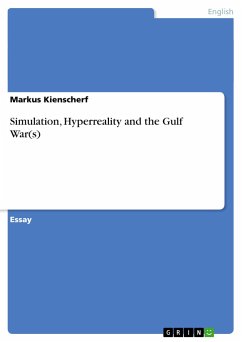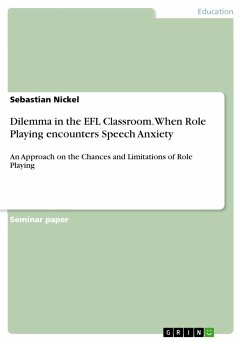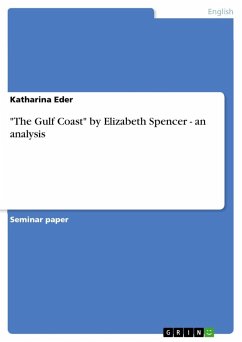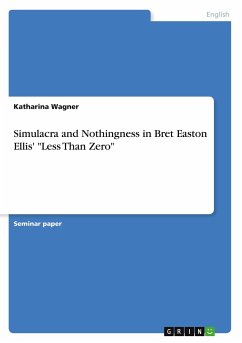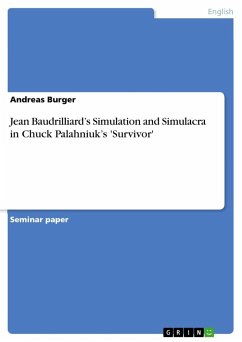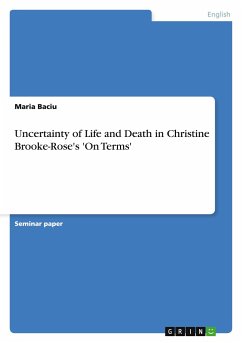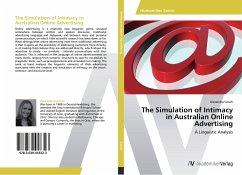Essay from the year 2004 in the subject American Studies - Culture and Applied Geography, grade: Distinction, University of Newcastle upon Tyne (School of English Literature, Language and Linguistics), course: Theorizing the Past, language: English, abstract: "How do things stand with the real event, then, if reality is everywhere infiltrated by images, virtuality and fiction?", asks Jean Baudrillard in his The Spirit of Terrorism (Baudrillard 2003:27-28) He already seems to know the answer to this, apparently, purely rhetorical question. Or does he? Baudrillard has become (in)famous for his controversial claim that we are living in an age of simulation and hyperreality, or what he calls the 'third order of simulacra' (Baudrillard 1993:50). The following paper will try to disentangle some of Baudrillard's arguments clustering around ideas of the simulacrum, hyperreality and simulation. Arguing that the last two gulf wars constitute concrete examples of simulation and hyperreality, both in terms of the (hyper)real events on the ground and in terms of the images bombarding our living rooms, it will, then, explore these events in the light of Baudrillard's ideas. In Simulacra and Simulation Baudrillard argues that in our current era of simulation the real is preceded by, and generated from, models, in a free play of signifiers which only refer to other signifiers (Baudrillard 1994:1-2). This constitutes the "third order of simulacra", in contrast to the 'second order' which was still dominated by production and a market law of value (Baudrillard 1993:50). Baudrillard uses the term value in both its economic and linguistic sense. Drawing on Marx and Sausurre he differentiates between two dimensions of value. First, there is a structural aspect corresponding to Marx's idea of exchange value. Each sign within a signifying system or each commodity within a system of exchange can be related to each other sign or commodity - "the structural dimension". The second aspect is functional, relating each term to what it designates (signifier to signified; sign to referent) or each commodity to its potential use (Marx's use-value) - "the referential dimension" (Baudrillard 1993 :6-9).
Hinweis: Dieser Artikel kann nur an eine deutsche Lieferadresse ausgeliefert werden.
Hinweis: Dieser Artikel kann nur an eine deutsche Lieferadresse ausgeliefert werden.

